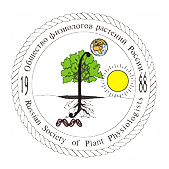Новости науки и практики // Июль 2024

Native desert plants have the potential for phytoremediation of phytotoxic metals in urban cities: implications for cities sustainability in arid environments
Scientists assessed the ability of three native desert plants—Pennisetum divisum, Tetraena qatarensis, and Brassica tournefortii—to accumulate phytotoxic metals in their different plant organs, including leaves, stems, and roots/rhizomes.
https://www.nature.com/articles/s41598-024-62622-x
Structure, function, and assembly of photosystem I in thylakoid membranes of vascular plants
Scientists focus on the biogenesis of the terminal protein supercomplex of the photosynthetic electron transport chain, photosystem I (PSI), in vascular plants. They summarize our current knowledge of the assembly process and the factors involved, and describe the challenges associated with resolving the assembly pathway in molecular detail.
https://academic.oup.com/plcell/advance-article/doi/10.1093/plcell/koae169/7689652
The curious case of selenium hyperaccumulation in Coelospermum decipiensfrom the Cape York Peninsula (Queensland, Australia)
The tropical shrub Coelospermum decipiens (Rubiaceae) is an extreme selenium (Se) hyperaccumulator, reported to accumulate up to 1140 µg Se g-1 when found growing on soils with Se https://academic.oup.com/aob/advance-article/doi/10.1093/aob/mcae103/7698287 The nucleotide-binding domain of NRC-dependent disease resistance proteins is sufficient to activate downstream helper NLR oligomerization and immune signaling Contreras et al. used Agrobacterium tumefaciens-mediated transient expression in Nicotiana benthamiana to show that the nucleotide-binding (NB) domain within the NB-ARC of Rx is necessary and sufficient for oligomerization and immune signaling of downstream helper NLRs. https://nph.onlinelibrary.wiley.com/doi/10.1111/nph.19818 Ploidy as a leaky reproductive barrier: mechanisms, rates and evolutionary significance of interploidy gene flow Recent genetic investigations revealed cases of rampant interploidy introgression in multiple ploidy-variable species. https://academic.oup.com/aob/advance-article/doi/10.1093/aob/mcae096/7692267 Mechanical resistance of the environment affects root hair growth and nucleus dynamics Scientists investigate the effect of the mechanical resistance of the culture medium on root hair-physical and phenotypical parameters such as length, time, and speed of growth. They show that the root hair growth rate and the nucleus speed decrease similarly as mechanical resistance increases while the time of growth of root hair cells is invariable. https://www.nature.com/articles/s41598-024-64423-8 Nitrogen-fixing organelle in a marine alga Studying a marine alga with a cyanobacterial endosymbiont, Coale et al. used soft x-ray tomography to visualize cell morphology and division of the alga, revealing a coordinated cell cycle in which the endosymbiont divides and is split evenly, similar to the situation for plastids and mitochondria in these cells. https://www.science.org/doi/10.1126/science.adk1075 Vitamin B1 enhancement in the endosperm of rice through thiamine sequestration Scientists address previous bottlenecks related to enhancing thiamine content in rice endosperm and field performance in a proof-of-concept study. https://onlinelibrary.wiley.com/doi/10.1111/pbi.14348 Temperature-smart plants: A new horizon with omics-driven plant breeding This review explores the potential of an integrated omics-driven approach to understanding how plants adapt and tolerate extreme temperatures. https://onlinelibrary.wiley.com/doi/10.1111/ppl.14188 The OsEIL1–OsWOX11 transcription factor module controls rice crown root development in response to soil compaction Soil compaction is a serious global problem that limits crop productivity by restricting root growth, but the underlying molecular mechanisms are largely unclear. Li et al. show that ethylene stimulates rice (Oryza sativa) crown root development in response to soil compaction. https://academic.oup.com/plcell/article/36/6/2393/7630070 У растений нашли новый солевой насос Растительные клетки держат насос для хлорид-ионов наготове, чтобы быстро включить его, когда соли вокруг станет многовато. https://www.nkj.ru/news/50522/ Unlocking iron homeostasis: apple plants reveal key mechanism A pivotal study has uncovered the intricate dance between calcium signaling and iron regulation in apple plants. The research reveals how the calmodulin-like protein MdCML15 and the BTB domain protein MdBT2 interact to control iron homeostasis, offering new strategies for improving crop nutrition and yields. This discovery could transform agricultural practices by addressing the widespread issue of iron deficiency in crops, which significantly impacts both plant health and food production. https://www.eurekalert.org/news-releases/1050129 Groundbreaking discovery: Zinc can make crop yields more climate-resilient Researchers have discovered that zinc plays a crucial role in the nitrogen fixation process of legumes. This finding, along with the transcriptional regulator Fixation Under Nitrate (FUN), could revolutionize legume-based agriculture by optimizing crop efficiency and reducing reliance on synthetic fertilizers. By understanding how zinc and FUN regulate nitrogen fixation, researchers might be able to enhance nitrogen delivery, improve crop yields, and promote more sustainable agricultural practices. https://www.eurekalert.org/news-releases/1049505 Scientists discover genetic ‘off switch’ in legume plants that limits biological ability to source nutrients The discovery of a new genetic regulator in legumes could be key to understanding how to increase the crop’s capacity to convert nitrogen from the air and improve soil quality. https://www.eurekalert.org/news-releases/1049499 Cell division: Before commitment, a very long engagement Before a cell commits fully to the process of dividing itself into two new cells, it may ensure the appropriateness of its commitment by staying for many hours -- sometimes more than a day -- in a reversible intermediate state, according to a new discovery. Their revelation of this fundamental feature of biology includes details of its mechanisms and dynamics, which may inform the development of future therapies targeting cancers and other diseases. https://www.sciencedaily.com/releases/2024/06/240626152148.htm The on-and-off affair in DNA New research demonstrates that a process that turns off DNA transcription can, paradoxically, also turn it on. Researchers have discovered that in thale cresses histone H3 lysine-9 (H3K9) methylation, conventionally thought to be a mark of turning off gene transcription, can also turn on gene expression via the interactions of two other proteins and histone marks. The molecular mechanisms demonstrate that rather than functioning as a simple 'off switch,' H3K9 methylation is more like a 'dimmer switch' that fine-tunes DNA transcription. The discovery suggests there might be similar mechanisms in other organisms, too.
Новости
Новости науки и практики // Октябрь 2024
Обзор научных новостей, опубликованных во всемирной паутине за последний месяцСобрание (ассамблея) научных обществ
МГУ, 11-13 октября 2024 г.Всероссийская научная конференция с международным участием «Экспериментальная биология растений и климатические вызовы»
Екатеринбург, с 3 по 8 октября 2024 г.


Объявления
Записей не найдено.



